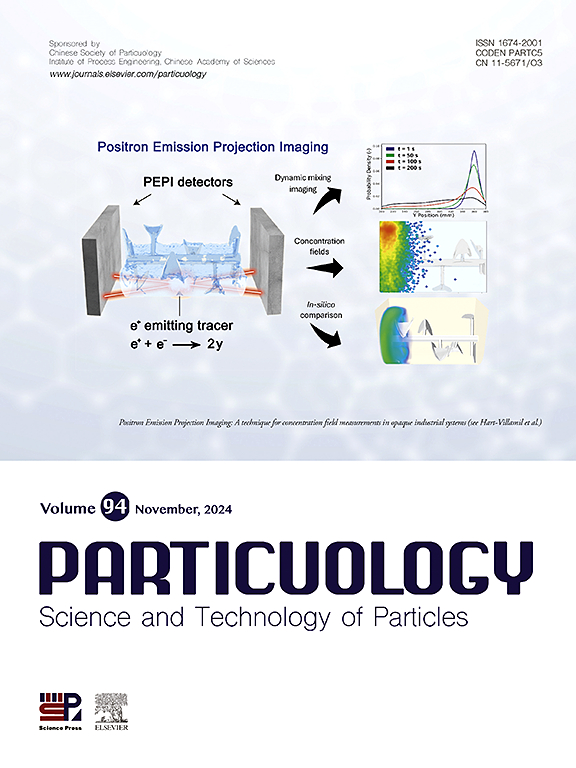Selective lithium leaching from spent Li(MnyFe1-y)PO4 cathodes with gradient in-situ-oxidation of Na2S2O8
IF 4.1
2区 材料科学
Q2 ENGINEERING, CHEMICAL
引用次数: 0
Abstract
The recovery of lithium from spent lithium iron manganese phosphate batteries is crucial for the efficient utilization of lithium resources and for alleviating supply constraints. This study proposes a selective lithium recovery method using a Na2S2O8 leaching system for spent lithium iron manganese phosphate battery cathodes. Na2S2O8 was selected based on an analysis of the thermodynamic data of each component in the leaching system. Essential leaching parameters, including H2SO4 dosage, Na2S2O8 dosage, leaching time, and leaching temperature were systematically investigated. The results showed that under the optimized experimental conditions, the lithium leaching rate reached 97.4 % with a selectivity of 96.24 %. The recovered Li2CO3 product meets battery grade requirements.
Na2S2O8梯度原位氧化法从废锂(MnyFe1-y)PO4阴极中选择性浸出锂
从废磷酸铁锰锂电池中回收锂对于有效利用锂资源和缓解供应限制至关重要。本研究提出了一种利用Na2S2O8浸出系统对磷酸铁锰锂电池废阴极进行选择性锂回收的方法。通过对浸出系统中各组分热力学数据的分析,选择了Na2S2O8。系统考察了H2SO4用量、Na2S2O8用量、浸出时间、浸出温度等关键浸出参数。结果表明,在优化的实验条件下,锂的浸出率达到97.4%,选择性为96.24%。回收的Li2CO3产品符合电池级要求。
本文章由计算机程序翻译,如有差异,请以英文原文为准。
求助全文
约1分钟内获得全文
求助全文
来源期刊

Particuology
工程技术-材料科学:综合
CiteScore
6.70
自引率
2.90%
发文量
1730
审稿时长
32 days
期刊介绍:
The word ‘particuology’ was coined to parallel the discipline for the science and technology of particles.
Particuology is an interdisciplinary journal that publishes frontier research articles and critical reviews on the discovery, formulation and engineering of particulate materials, processes and systems. It especially welcomes contributions utilising advanced theoretical, modelling and measurement methods to enable the discovery and creation of new particulate materials, and the manufacturing of functional particulate-based products, such as sensors.
Papers are handled by Thematic Editors who oversee contributions from specific subject fields. These fields are classified into: Particle Synthesis and Modification; Particle Characterization and Measurement; Granular Systems and Bulk Solids Technology; Fluidization and Particle-Fluid Systems; Aerosols; and Applications of Particle Technology.
Key topics concerning the creation and processing of particulates include:
-Modelling and simulation of particle formation, collective behaviour of particles and systems for particle production over a broad spectrum of length scales
-Mining of experimental data for particle synthesis and surface properties to facilitate the creation of new materials and processes
-Particle design and preparation including controlled response and sensing functionalities in formation, delivery systems and biological systems, etc.
-Experimental and computational methods for visualization and analysis of particulate system.
These topics are broadly relevant to the production of materials, pharmaceuticals and food, and to the conversion of energy resources to fuels and protection of the environment.
 求助内容:
求助内容: 应助结果提醒方式:
应助结果提醒方式:


